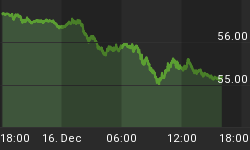What gives here? The Commerce Department reports that GDP grew at an annual rate of 3.3 per cent while unemployment rose to 6.1 per cent, giving partisan commentators enough ammunition to attack each other. Politically I'm a very conservative man who thoroughly detests the Democratic Party and who tends to think of most journalists as nothing better than leftwing cockroaches, an opinion that has been greatly strengthened by the media's disgusting attacks on Sarah Palin. Nevertheless, the one thing I will never do is bend economics for partisan reasons. To do so would be to cheat my readers.
So did the economy really enjoy 3.3 per cent growth in GDP? The answer is yes. Does this mean that the economy is basically healthy and that Americans can look forward to steady economic growth from this point onwards? The answer is no. First and foremost, I want to make it clear that in my opinion there has been very little economic growth of late.
Let us first deal with the 3.3 per cent figure. There exists what economists call the J-curve. This illustrates the fact that a devaluation lowers the costs of a country's products in terms of other currencies and, in doing so, raises the costs of imports. (The reverse is also true). This is why a falling dollar led to a surge in US exports, including manufactures. The resulting surge had a positive and significant effect on GDP. Nevertheless, it probably did nothing for economic growth.
To increase production for exports American companies have to divert capital and labour from production for domestic use to production to satisfy foreign demands. This naturally raises the incomes of exporting firms which then adds to GDP. Now growth as defined by the Austrian School of economics is something else altogether. The Austrians stress the vital importance of a capital structure which consists of complex stages of production. (This approach was quite common in some early economic text books).
Therefore, growth is the process of extending this structure by adding more and more complex stage of production to it. Where labour and capital are diverted from production for domestic use to production for exports, it can easily be seen that this process in itself does not add a single stage to the production structure. Hence there is no growth. In fact, unemployment can start rising even as the demand for exports surge, as can be seen from recent unemployment figures.
Of course, as unemployment rises the fallacy that consumption drives growth is resorted to. For example, Richard Yamarone, an economist at Argus Research, expressed fears that rising unemployment would cause consumers to reduce their spending. Terry Connelly, dean of Golden Gate University's Ageno School of Business, expressed the same fear when he argued that mixing "Mix business caution with consumer exhaustion and you have a recipe for a real recession". This is pure baloney.
Time and time again I hsve stressed that total spending could be as high as 2.5 times GDP because GDP is not a gross figure: it is in fact a net value-added approach that omits a huge amount of spending between the stages of production. I cannot find a single historical example of a recession being triggered by falling consumption. In every instance of the business cycle the recession always started in the higher stages of production -- and this was certainly the case with the Great Depression.*
I would say that what we are seeing is the tale end of a boom that has worked its way out. Naturally, this will not stop the mass of political activists that have the gall to call themselves journalists from blaming the Republicans in general and Bush in particular when the real culprit is lousy economics. And it won't stop these political bigots from confidently asserting that what America needs is Obama's proposal to burden the economy with a $683 billion tax hike over five years.
*In any case of a consumption-led recession one would find that virtually all of the expenditure of the preceding boom would have been concentrated on consumption. This would not fit the pattern of the boom-bust-cycle.
















